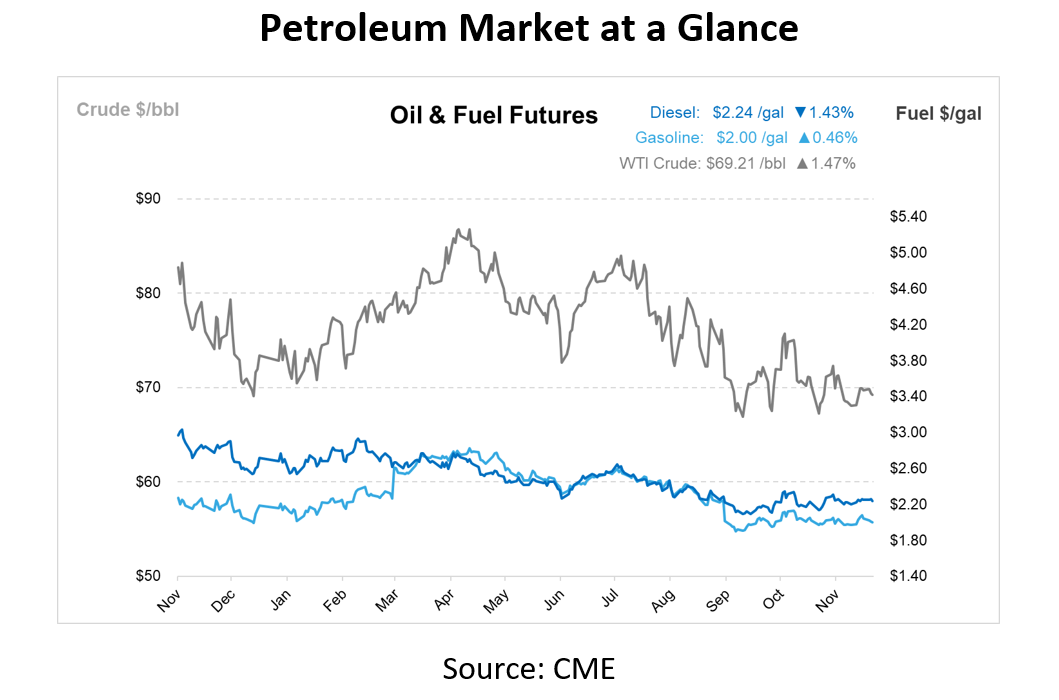
What’s That: Additionality in Carbon Markets
In observance of the Thanksgiving holiday, FUELSNews will not be published on Thursday, November 28, or Friday, November 29. Regular publication will resume on Monday, December 2. Mansfield wishes you a safe and joyous holiday season.
As companies look to reduce their carbon footprints, many are exploring carbon offsetting. However, not all carbon offset projects are created equal. One concept to understand when selecting high-quality carbon offsets is additionality. But what does additionality mean, and why is it essential for meaningful carbon offsets? Additionality is a commonly misunderstood topic, so let’s clear the air.
What is Additionality in Carbon Markets?
In carbon offsetting, additionality refers to the impact of a project that wouldn’t have happened without the support of carbon credit funding. Essentially, a project is “additional” if it results in emissions reductions or removals that wouldn’t have occurred in a “business as usual” scenario. This concept ensures that the project creates a genuine environmental benefit that contributes directly to offsetting carbon emissions.
Why Additionality Matters in the Carbon Market
For fuel customers aiming to offset emissions, additionality is fundamental to ensuring that the credits they purchase make a real-world impact. If a project would have happened anyway, without carbon credit funding, the emissions reductions achieved don’t represent a true offset. As a result, purchasing credits from non-additional projects doesn’t effectively balance out your emissions and can misrepresent your environmental efforts.
Research highlights the importance of additionality, with one study finding that 85% of carbon offsets on the voluntary market may not meet additionality standards, meaning many credits fail to contribute new emissions reductions. For a company committed to genuine sustainability, understanding additionality helps in selecting credible offset projects that drive real change.
Evaluating Additionality in Carbon Projects
To determine if a carbon offset project is additional, companies should evaluate the following criteria:
Baseline Estimate: A project’s impact should be compared to a realistic, “business as usual” baseline. Projects that rely on hypothetical or exaggerated baselines may not deliver the additional benefits they claim.
Financial Additionality: The project should depend on carbon credit sales for its financial viability. Projects that have other significant income streams or could operate profitably without carbon credits may lack financial additionality.
Policy Additionality: If a project’s actions are mandated by local or national laws, it may not offer additional carbon reductions. For instance, if a government already enforces deforestation restrictions, a project aimed at reducing deforestation may not be additional.
Technological Additionality: Projects that employ innovative, emerging technologies can often prove additionality, as these methods typically exist solely for their carbon reduction potential. In contrast, widely accessible and cost-effective technologies may not demonstrate the same level of additionality.
Key red flags to watch for when considering additionality in carbon projects include unrealistic baseline estimates that inflate a project’s impact, significant income sources outside of carbon credit sales (which may indicate the project doesn’t rely on carbon funding), use of commonly available, low-cost technologies, and projects performing activities already required by law. Addressing these factors helps confirm that your carbon offsets genuinely contribute to environmental goals.
Predictive Nature of Additionality for Risk – Assessment
Although determining additionality is intrinsically predictive, it has implications for evaluating the quality of carbon credits. To determine a project’s eligibility for credits, carbon crediting plans must make binary choices on additionality, which means that a proposed greenhouse gas (GHG) project is either considered additional or not. Verifying additionality in practice, however, requires comparison of the project with a fictitious situation in which the carbon credit money is absent.
Businesses may more precisely evaluate the quality of possible carbon credits and make sure their offset expenditures have a considerable climate implication by seeing additionality as a probability rather than a strict binary conclusion.
The Bottom Line
For companies that burn a lot of fuel, purchasing carbon offsets with verified additionality means ensuring that each credit represents a real reduction or removal of emissions that wouldn’t have happened otherwise. By understanding and prioritizing additionality, companies can better manage their carbon footprints, invest in projects that genuinely contribute to environmental goals, and strengthen their commitment to sustainability.
If you are ready to reduce your emissions without compromise, contact Mansfield’s sustainability experts today. We partner with CNaught to purchase a diversified portfolio of high-quality carbon credits that is designed to maximize impact, mitigate risk, and foster innovation. A portfolio approach to carbon credits is recommended by the World Economic Forum, and the CNaught portfolio embodies the science-based best practices laid out in Oxford’s Principles for Carbon Offsetting.

This article is part of Daily Market News & Insights
MARKET CONDITION REPORT - DISCLAIMER
The information contained herein is derived from sources believed to be reliable; however, this information is not guaranteed as to its accuracy or completeness. Furthermore, no responsibility is assumed for use of this material and no express or implied warranties or guarantees are made. This material and any view or comment expressed herein are provided for informational purposes only and should not be construed in any way as an inducement or recommendation to buy or sell products, commodity futures or options contracts.





